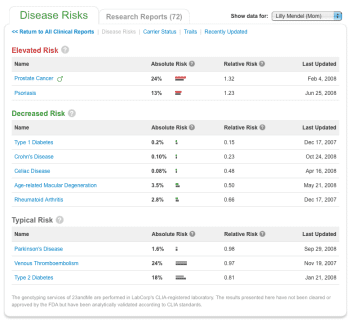
As the director of Britain’s Wellcome Trust Center for Human Genetics, Peter Donnelly oversees research that provides vital raw material for the 23andMe Personal Genome Serviceâ„¢ – specifically, correlations between one-letter DNA variations, known as SNPs, and particular diseases.
Those correlations are made by research projects known as genome-wide association studies (GWAS), which scan the genomes of people with a disease and similar individuals who don’t, then look for statistically significant genetic differences between the two groups. The studies can be enormous – last year the Wellcome Trust published the results of a GWAS that analyzed data from 17,000 participants and found genetic associations with seven different diseases – coronary heart disease, type 1 diabetes, type 2 diabetes, rheumatoid arthritis, Crohn’s disease, bipolar disorder and hypertension.
In a commentary published this week by Nature, Donnelly assessed what GWAS have been able to achieve so far, and argued that in most cases, people should be able to gain valuable information from having access to their own genomes.
Here’s Donnelly’s reasoning in his own words:
For a particular disease, most individuals will have inherited some sequence variants that confer risk and some variants that provide protection, and they will therefore have an overall risk around average. A small proportion of people, however, will have inherited mainly variants that confer risk of developing the disease. Using Crohn’s disease as an example … the top 5% of the UK population … have a 5–8-fold higher risk than average of developing the disease, whereas the top 1% have a 9–15-fold higher risk.
Using statistics from the US, that amounts to a risk increase from the poplation average of less than 0.5% to somewhere in the neighborhood of 4-7%. Performing the same calculations for type 2 diabetes, Donnelly concludes that 1% of the population would end up having a 4-fold risk increase, which amounts to about a 50/50 chance of developing the disease.
“Across 50 diseases,” Donnelly continues (23andMe provides complete estimates of lifetime genetic risk due to known SNPs for 10 common diseases),
making the simplifying assumption that susceptibility to each disease is independent of susceptibility to every other disease, almost everyone will be in the top 5% of risk for at least one disease, and nearly half of all people will be in the top 1% for at least one disease. … Given that it is possible to reduce the risk of developing certain diseases, I can see the value of knowing about the genetic risks now.